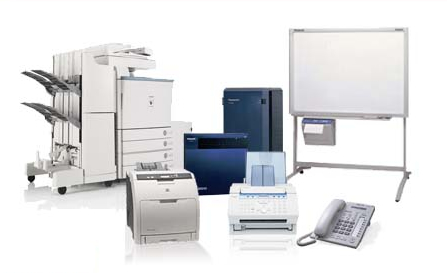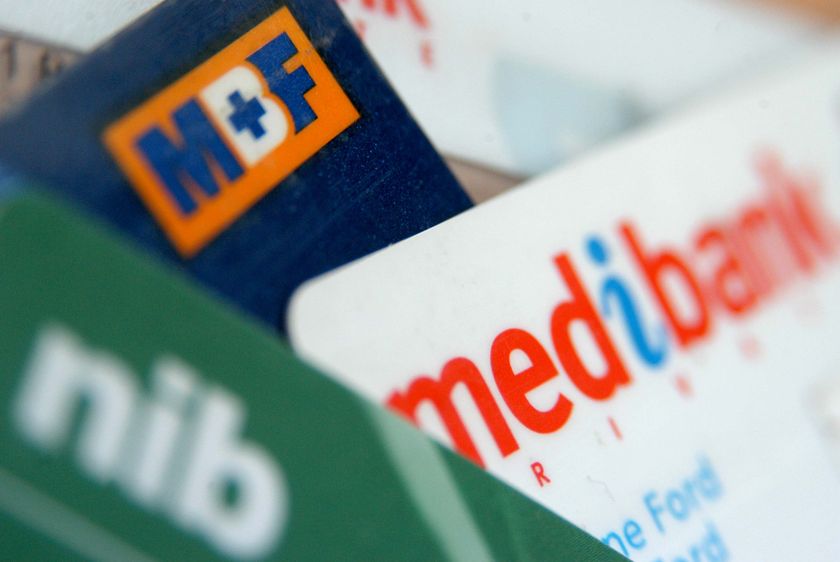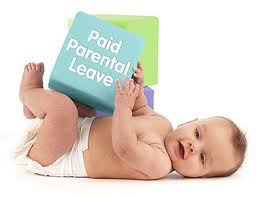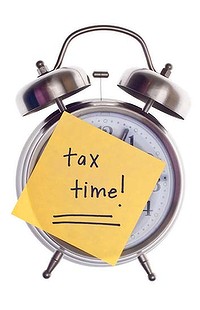Newsletter
Instant Asset Write Off
- Tuesday, 01 January 2013 00:33
INCREASE IN THE INSTANT ASSET WRITE-OFF THRESHOLD FOR SMALL BUSINESSES
The Government will simplify tax for small businesses and boost their cash flow, by allowing small businesses to instantly write off each and every new business asset costing less than $6,500 (for as many assets as they purchase) from 2012-13.
This means that a business that purchases four items of equipment worth $6,000 each will be able to get a deduction of $24,000 in the first year (rather than $3,600). As a result, this small business company will pay around $6,120 less tax in the next tax return. If they operated as a sole trader they may be able to get an even bigger tax saving.
In addition, the Government will simplify tax for small businesses, by replacing the two depreciation pools that currently exist, with a single depreciation pool. Assets costing more than $6,500, can be depreciated in a single pool from 2012-13 (15 per cent in the year they are purchased, 30 per cent in each subsequent year).
IMMEDIATE DEDUCTION FOR THE FIRST $5,000 OF THE COST OF A MOTOR VEHICLE BY SMALL BUSINESSES
This means that small businesses will be able to immediately deduct the first $5,000 of a new or used motor vehicle, purchased from 1 July this year.
Moreover, the remainder of the cost of the vehicle will also be depreciated under a new single pool depreciation rate of 15 per cent in the initial year of purchase and 30 per cent in subsequent years to the extent that the vehicle was used for a taxable purpose. This concession does not apply to tractors, graders, road rollers, combine harvesters, trailers and earthmoving vehicles.
These reforms will make the tax system simpler for small businesses, whether they are run by sole traders, partnerships, trusts or through a company.
Private Health Insurance and Medicare Levy Surcharge
- Tuesday, 01 January 2013 00:33
From 1 July 2012, an individual's entitlement to a private health insurance rebate will be income tested. These changes are for the 2012-13 financial year. Taxpayers will not be entitled to their current rate of rebate if their income for Medicare levy surcharge purposes is either:

- a single income of $84,001 or more
- a combined family income of $168,001 or more.
This means that if your adjusted taxable income is $84,000 or below as a single income or $168,000 or below as a family income (thresholds increase by $1,500 per child after the first child) then you are NOT affected by the changes and no action is required.
There are also two new income thresholds where taxpayers will pay a higher rate of Medicare levy surcharge at 1.25% or 1.5%.
|
Income thresholds |
||||
|
Singles |
$0 - $84,000 |
$84,001 - $97,000 |
$97,001 - $130,000 |
$130,001 and above |
|
Families* |
$0 - $168,000 |
$168,001 - $194,000 |
$194,001 - $260,000 |
$260,001 and above |
|
Private health insurance rebate |
||||
|
Unchanged |
Tier 1 |
Tier 2 |
Tier 3 |
|
|
Aged under 65 |
30% |
20% |
10% |
0% |
|
Aged 65-69 |
35% |
25% |
15% |
0% |
|
Aged 70 or over |
40% |
30% |
20% |
0% |
|
Medicare levy surcharge |
||||
|
Rates |
0% |
1% |
1.25% |
1.5% |
*The families' threshold is increased by $1,500 for each dependent child after the first. Families include couples and single parent families.
In May 2012, the ATO sent letters directly to taxpayers. You would have received this letter where the ATO have estimated your income for surcharge purposes is in the range where you will be affected by the changes.
You will receive this where one of the following applies to your situation:
- you have private health insurance and claim the rebate as a premium reduction
- you have claimed the private health insurance tax offset
- you have paid Medicare levy surcharge.
The letter provides information to help you work out whether your entitlement will decrease. You may choose to contact your private health insurer to reduce the rebate you currently receive as a premium reduction to avoid incurring a liability at tax time in 2013.
FEDERAL GOVERNMENT’S LIFETIME HEALTH COVER LOADING SCHEME
The Federal Government’s Lifetime Health Cover loading scheme will not change. This means if you hold hospital cover and joined before turning 31, your exempt from paying a 2% loading on top of the normal premium for each year you didn’t have hospital cover over age 31.
If you joined after turning 31, your premium increases by 2% (up to maximum loading of 70% per year). This applies for 10 years straight. For couples the loadings are shared across both adults on the membership.
If you decide to drop your hospital cover, you may incur this loading if and when you return to private health insurance in the future.
Paid Parental Leave Scheme for Employers
- Tuesday, 01 January 2013 00:33

The Paid Parental Leave scheme is set up to help you retain valuable and skilled staff by providing financial support for parents while they are off work caring for a newborn or recently adopted child. You will receive funds from the Department of Human Services before you need to provide Parental Leave Pay to your employee. You do this in the way you would normally pay their salary or wages. You have no obligation to pay your employee until the Department of Human Services pays you.
Eligible working parents can get 18 weeks of Parental Leave Pay at the rate of the National Minimum Wage (which has been increased to $606.40 per week from 1 July 2012). Full-time, part-time, casual, seasonal, contract and self-employed workers may be eligible. The employee needs to lodge a claim with the Department of Human Services as the first step and it is their job to assess whether your employee is eligible for Parental Leave Pay.
You are required to provide Parental Leave Pay for an eligible employee who:
- has a child born or adopted on or after 1 July 2011
- has worked for you at least 12 months prior to the expected date of birth or adoption
- will be your employee for their Paid Parental Leave period
- is Australian based, and
- is expected to receive at least 8 weeks of Parental Leave Pay.
Your business must have an Australian Business Number (ABN) to participate in the scheme. If your employee is eligible for Parental Leave Pay but you aren’t required to provide it, the Department of Human Services will pay them directly. However if you would like to be involved and remain connected to your employee while they are away (and your employee agrees), the Department of Human Services will fund you to provide their Parental Leave Pay.
Keep in mind, to be eligible for the scheme, your employee must be on leave or not working from the time they become their child’s primary carer until the end of their Paid Parental Leave period.
Parental Leave Pay is pretty flexible. Your employee can take it at the same time as any type of paid or unpaid leave, but it must be taken in a continuous block of up to 18 weeks. For instance, they could take 4 weeks of annual leave, then 6 weeks of paid maternity leave and then 8 weeks of unpaid parental leave, all while receiving Parental Leave Pay. It can start from the day their child is born or on a later date, however they must receive all of their Parental Leave Pay within 52 weeks of the birth or adoption.
Parental Leave Pay doesn’t change any of your employee’s existing leave entitlements or give them a new entitlement to leave as it’s a payment and not entitlement to leave, thus has no effect on your employee’s leave accrual.
You might already know long-term employees (worked for your business for 12 months or more) are entitled to a minimum 12 months unpaid parental leave under the Fair Work Act 2009. They can also request an additional 12 months unpaid leave on top of this. If you currently provide paid maternity or parental leave through an industrial agreement or law, you need to know you cannot withdraw that entitlement for the life of the agreement or law.
To participate in the Paid Parental Leave scheme, you need to register your business details with the Department of Human Services however this does not need to be done until they contact you.
Key Tax Dates
- Tuesday, 01 January 2013 00:33
14 JULY 2012
• Payers must issue 2011-12 PAYG withholding payment summaries to payees (that is, employees and other workers).
21 JULY 2012
• June 2012 monthly activity statements - final date for lodgement and payment. To ensure you receive the correct amount of credit in your income tax assessment, finalise all your PAYG instalments before you lodge your tax return.
28 JULY 2012
• Superannuation guarantee contributions for Quarter 4 (April - June 2012) are to be made to the fund by this date. If an employer does not pay the minimum superannuation guarantee contributions for Quarter 4 by this date, they must pay the SGC and lodge a Superannuation guarantee charge statement-quarterly by 28 August 2012. The SGC is not tax deductible.
14 AUGUST 2012
• PAYG withholding payment summary annual report – final date for lodgement. Use this to report amounts withheld from salary and wages and other payments. These amounts are reported at Label W2 of the activity statement. If a tax agent prepares the report the due date is 30 September 2012.
21 AUGUST 2012
• July 2012 monthly activity statements - final date for lodgement and payment.
25 AUGUST 2012
• Quarter 4 activity statements (April - June 2012) – final date for lodgement and payment for electronic lodgement (ELS, ECI, Tax Agent Portal or BAS Agent Portal). To ensure you receive the correct amount of credit in your income tax assessment, finalise all your PAYG instalments before you lodge your tax return.
21 SEPTEMBER 2012
• August 2012 monthly activity statements - final date for lodgement and payment.
Newsletter Signup
Receive FREE information and advice on Accounting & Taxation every Quarter
SignupArchive
- 4th Quarter 2024 (8)
- 3rd Quarter 2024 (9)
- 2nd Quarter 2024 (9)
- 1st Quarter 2024 (11)
- 4th Quarter 2023 (11)
- 3rd Quarter 2023 (9)
- 2nd Quarter 2023 (7)
- 1st Quarter 2023 (8)
- 4th Quarter 2022 (9)
- 3rd Quarter 2022 (8)
- 2nd Quarter 2022 (10)
- 1st Quarter 2022 (9)
- 4th Quarter 2021 (9)
- 3rd Quarter 2021 (8)
- 2nd Quarter 2021 (9)
- 1st Quarter 2021 (7)
- 4th Quarter 2020 (8)
- COVID-19 STIMULUS NEWSLETTER (8)
- 3rd Quarter 2020 (7)
- 2nd Quarter 2020 (9)
- 1st Quarter 2020 (9)
- 4th Quarter 2019 (8)
- 3rd Quarter 2019 (8)
- 2nd Quarter 2019 (7)
- 1st Quarter 2019 (8)
- 4th Quarter 2018 (7)
- 3rd Quarter 2018 (8)
- 2nd Quarter 2018 (8)
- 1st Quarter 2018 (8)
- 3rd Quarter 2017 (7)
- 2nd Quarter 2017 (7)
- 1st Quarter 2017 (7)
- 4th Quarter 2017 (8)
- 4th Quarter 2016 (7)
- 3rd Quater 2016 (7)
- 2nd Quater 2016 (7)
- 1st Quarter 2016 (8)
- 4th Quarter 2015 (6)
- 3rd Quarter 2015 (6)
- 2nd Quarter 2015 (8)
- 1st Quarter 2015 (6)
- 4th Quarter 2014 (7)
- 3rd Quarter 2014 (8)
- 2nd Quarter 2014 (7)
- 1st Quarter 2014 (8)
- 4th Quarter 2013 (7)
- 3rd Quarter 2013 (6)
- 2nd Quarter 2013 (9)
- 1st Quarter 2013 (8)